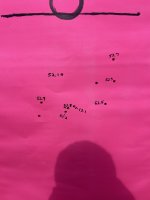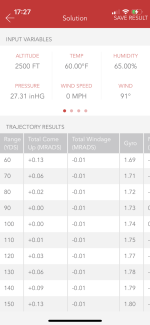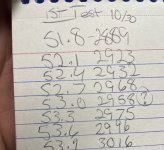So I shot a ladder test today at 500 yards for my new 6.5/284
Lapua brass
Federal 210m
140 hybrid target
4831sc
I shot a ladder test today with a 7mph 2:00 wind
It shot really well but my higher charged shots are lower it’s almost like I shot it upside down compared to what I thought it should be not disappointed in the results just confused. Any insight?
Lapua brass
Federal 210m
140 hybrid target
4831sc
I shot a ladder test today with a 7mph 2:00 wind
It shot really well but my higher charged shots are lower it’s almost like I shot it upside down compared to what I thought it should be not disappointed in the results just confused. Any insight?
Attachments
Last edited:




